How Many Differnt Types of Blue Eyes Are Thire
The Truth About Blue Eyes
"Pale Blue Eyes" by the Velvet Underground. "Sweet Child O' Mine" by Guns N' Roses. "I Still Miss Someone" by Johnny Cash. Those are just a few of the utterly ubiquitous amounts of songs out there about blue eyes, usually about someone yearning or pining for a lover with eyes the color of the sky. So there's definitely a cultural obsession with those of the blue-eyed persuasion, whether it's celebrating their unique beauty or expressing fear about their alleged icy cold-hearts.
All emotions and broken hearts aside, there's a lot to learn about not just blue eyes themselves, but also the people who peer out at the world through them. Whether it's due to weird scientific facts, related health conditions, or just plain genetics, those with baby blues are just a little bit different than their brown-eyed counterparts. So without further ado, read on to learn the truth about blue eyes and the population of people who have them.
There's no blue pigment in blue eyes
Even though blue eyes appear to be, well, blue, they're actually not blue at all. It sounds crazy, but here's no such thing as blue pigment when it comes to our peepers — you're either melanated or not very melanated at all. And if you're melanated in each layer of the iris like the majority of the human race, then you would have brown eyes that are actually brown (via Gizmodo) — no optical illusions there!
So if there's no pigment in the front layers of the iris of blue eyed-people (there is some melanin in the back layer), what mechanism is at work that makes them look blue? According to the American Academy of Ophthalmology, blue eyes look blue for the same reason that both the ocean and the sky appear to be blue: it's simply a trick of the light. This is called the Tyndall Effect, which is the way that light scatters in blue eyes, giving rise to the blue appearance. Fascinating, no?
Only a small percentage of people have blue eyes
Although there are a ton of actors, models, and other celebs who have blue eyes, which can make these colored eyes seem like a common asset (at least on television), not all that many people are lucky enough to boast baby blues. In fact, the most common eye color throughout the entire world is brown, according to an article in World Atlas. Specifically, 79 percent of human beings have eyes the color of coffee and chocolate, dwarfing every other eye color as the dominant phenotype.
So just how many people have blue eyes around the world? World Atlas estimates that approximately 8 to 10 percent of human beings are blessed with cerulean peepers. Of course, plenty of folks who don't have blue eyes can fake it with contacts, as celebs like Selena Gomez and Nicki Minaj have done on occasion. But you can always tell the difference between a natural blue and an artificial blue — it's a pretty hard color to fake.
But blue eyes are not the rarest eye color
Although the odds of having blue eyes are markedly lower than having brown eyes, blue isn't the rarest of all eye colors. In fact, it's actually the second most common eye color out there, according to an article inWorld Atlas,which is a little surprising given that 8 to 10 percent isn't exactly a huge swath of the population.
But it turns out that having hazel eyes is less common than having either blue or brown eyes, as only 5 percent of people have that color in their irises. Additionally, approximately 5 percent of the world's population have amber-colored eyes, although sometimes this is confused with the hazel pattern. Less common than either of those shades is green, as only 2 percent of the world's population is blessed with that phenotype.
The most rare eye colors in the world are gray eyes, red/violet eyes (which are often in people with severe forms of albinism), and eyes with heterochromia (different colored eyes), all clocking in at less than one percent of all people worldwide. They're the real unicorns here!
This is where blue eyes are the most common
Blue eyes can appear to be more or less common depending where in the world you are, as the phenotype is much more common in some places. In fact, sometimes the majority of people in an area have blue eyes. For example, if you were strolling through Estonia or taking a vacation in Finland, not having blue eyes would be rare, as 89 percent of the populations of those countries have azure irises, according to World Atlas. That's a lot!
After that, there's a significant drop, although blue eyes are still the majority in Ireland and Scotland, at 57 percent and 50 percent, respectively. England is next on the list with 48 percent, while 45 percent of people in Wales have baby blues. Belgium and France clock in at seventh and eighth on the list, with 28.9 percent of people in the former having blue eyes and 20.2 percent having blue eyes in the latter. Finally, at places nine and ten are the United States and Spain, both with just over 16 percent of the population possessing cerulean eyes.
Everyone with blue eyes has a common ancestor
Plenty of people have blue eyes today, and there have been people with blue eyes for thousands of years. But believe it or not, that wasn't always the case. Thanks to the scientists at Copenhagen University, we now know that somewhere between 6,000 and 10,000 years ago, everyone had brown eyes, according to Science Daily. But at some point during that time, a mutation occurred on the OCA2 gene, which controls how much melanin we produce. Specifically, this mutation essentially acted like a "switch" and "turned off" people's ability to produce brown eyes. Thus blue eyes were born!
Not only did the team at the university identify the mutation that created blue eyes, but they also discovered that everyone with blue eyes has something in common. "From this we can conclude that all blue-eyed individuals are linked to the same ancestor," said Professor Hans Eiberg. "They have all inherited the same switch at exactly the same spot in their DNA." That's unlike brown-eyed folks, who have significant differences in their DNA related to melanin production.
This is why it looks like blue eyes change color
If you are the lucky owner of a set of cobalt peepers, chances are you've noticed that your eyes appear to change color, sometimes looking bluer or grayer — or even lighter or darker. That was certainly the case with the famous movie actress Elizabeth Taylor, whose bright blue eyes could look violet when the light hit them just right.
There's a reason blue eyes appear to change color, which is related to why they look blue in the first place. You guessed it: It all depends on how much light is both coming into and reflecting out of the eye, according to the American Academy of Ophthalmology. Additionally, the color of the eye can look different depending on the color of clothing that a person wears, as well as the color and style of makeup that's applied around the eye.
To be fair, people with green and hazel eyes are also prone to seemingly color-changing irises as well, so this isn't unique to blue-eyed folks. But it's notable nonetheless.
Why do some babies' blue eyes turn brown?
If you're a parent, or are close to someone who's had a baby, you might have had the experience of watching the eyes of an infant change color from bright blue to green or brown. That's why you can't know what someone's eye color will be when they grow up until about the six-month mark, according to an article published by McGill University.
The reason that many babies are born with blue eyes that can later change to brown is, once again, due to the way melanin functions in the human body. When a baby is born, melanin hasn't yet been fully deposited into the iris of the child's eye, which results in the iris being blue. But after a certain period, the genetics kick in and melanin production either ramps up, changing the color of the baby's eye, or doesn't, rendering the color of the iris blue for life. It's just one more way that the human body is truly a mystery.
Brown-eyed parents can have a child with blue eyes
"You have your parent's eyes." So goes the old adage, which celebrates the notion that children will always resemble at least one of their biological parents. So if you happen to be the bearer of big blue eyes, shouldn't your wee one also inherit them? Conversely, if both you and your partner are of the brown-eyed persuasion, wouldn't it logically follow that your children will be too?
Of course, given the complexity of genetics, it's not that simple. Surprisingly, two brown-eyed parents can have a child with blue eyes, according to an article published by the University of Delaware. Additionally, two blue-eyed parents can give birth to a brown-eyed baby.
So what's the reasoning? In a nutshell, eye color is not determined by one single allele or recessive gene. Rather, it's determined by several different genes, as well as the interplay between them. So don't be surprised if your child has eyes that don't resemble either parent — it's just how genetics work.
Are blue eyes more sensitive to light than others?
Everyone needs vitamin D in their bodies, according to a journal article in Environmental Health Perspectives, so it's important to get a little sunlight on a regular basis. But depending on the color of your skin, you have to be varying degrees of careful when you step outside, lest you wind up with a sunburn, according to the American Cancer Society. So if you're light-skinned, you're more at risk, though everyone should take precautions when they go out, regardless of skin color.
Just as you have to be careful with your skin when you're outside, you also have to protect your eyes accordingly, especially if they're light-colored. "Clinically speaking, people with blue or light-colored irises do tend to be more light-sensitive," ophthalmologist Ruth Williams explained in an interview with Everyday Health. "This is likely due to the sparsity of light-absorbing pigment in the eye." That means you should never leave your sunglasses at home, especially if you have blue eyes.
People with blue eyes may have an increased risk of cancer
Although having blue eyes (or light-colored eyes) is considered quite beautiful, there is one disadvantage that comes along with this phenotype. Unfortunately, those pretty eyes mean you're more susceptible to cancer, according to an article inEveryday Health. Specifically, fair-eyed folks are more at risk of developing melanoma of the uvea (that's the middle layer of your eye) than their brown-eyed counterparts. Yikes!
Fortunately, there's a pretty simple way to protect your precious peepers from harmful UV rays, according to ophthalmologist Dr. Ruth Williams. "People with light iris color need to be diligent in wearing UV-protected sunglasses," she advised. The other good news is that melanoma of the uvea is pretty rare, and only six out of one million people are diagnosed with it annually. Phew!
Once again, taking precautions with your skin in the sunlight is also important, as fair-eyed people are also more prone to getting skin cancer. Be careful out there!
Blue eye color can impact your vision
It might sound a little bit crazy to some, but your eye color can have an impact on the quality of your vision, according to optometrist Richard L. Ison. "Because of the lack of pigment in lighter color eyes — like blue or green eyes as opposed to brown — you get a lot more unwanted light and that can create glare problems," he shared in an article in ESPN. Who knew?
That's why baseball player Josh Hamilton decided to don a pair of colored contact lenses during the day to reduce the glare and improve his vision. "I've never worn contact lenses in my life and I really would like to see the ball in the daytime," he revealed. "So therefore I'm trying any means possible to do that." Given that his stats were better at night, he wanted to see if this approach would help him improve in the daytime. Fortunately for Hamilton, he said it did.
Do people with blue eyes handle pain better than others?
Although our blue-eyed brethren are indeed at a greater risk of cancer, the news isn't all bad, as there's also a bit of a super power that comes with having blue eyes. As it turns out, blue- and green-eyed ladies have a higher pain tolerance than people with brown or hazel eyes, according to an article inMedical Daily.
This information came to light thanks to a study conducted by Dr. Inna Belfer, a geneticist at the University of Pittsburgh. She surveyed 58 expectant mothers as they went through the birthing process and found that light-eyed women experienced less pain and discomfort while in labor. She also found that light-eyed women were less likely to develop anxiety or depression once the baby had arrived than dark-eyed women were, all thanks to having less melanin.
Belfer also shared that she plans on continuing research in this area. "We are going to see if there is a link between eye color and clinical pain... in men and in women, and in different pain models other than the labor pain model," she shared in an article in Medscape Medical News. Fascinating!
Do people with blue eyes really drink more?
Another strange thing that comes with having blue eyes has to do with alcohol consumption, according to an article published in ResearchGate. In the study, scientists relied on archival data to determine how eye color has an impact on how much individuals drink and how well they can tolerate alcohol.
Specifically, there were two samples of people that they studied: one group of 10,860 white men (who were prison inmates) and one group of 1,862 white women who responded to a nationwide survey. What they found was that in both groups, individuals with dark eyes drank a notably smaller amount of alcohol than their light-eyed counterparts. This conclusion was consistent with prior findings that brown-eyed people are more susceptible to the effects of some medications as well.
Additionally, the researchers concluded that dark-eyed folks are less likely to become dependent on alcohol, as their heightened sensitivity prevents them from drinking the quantity that would make them physically dependent in the first place. What a weird fact!
Blue-eyed men prefer women with blue eyes
Another fun fact about blue eyes has to do with men and their dating and relationship preferences. According to a study published in the journalBehavioral Ecology and Sociobiology, blue-eyed men find blue-eyed women more attractive than women with any other eye color. That wasn't the case for blue-eyed women, who didn't demonstrate a specific preference for blue-eyed men. Additionally, the brown-eyed men and women also didn't show a proclivity for members of the opposite sex with any one eye color, making the blue-eyed men the outlier.
What's the theory as to why this is the case? The researchers attribute this preference to what they call paternity uncertainty, which is an anxiety that can cause men to question if the child is biologically theirs. Given that blue eyes are considered to be a clear genetic mechanism of inheritance, it makes sense that men would be assured by seeing himself in his progeny. That would give him the confidence that the child is truly his.
andersonlielf1979.blogspot.com
Source: https://www.thelist.com/160332/the-truth-about-blue-eyes/
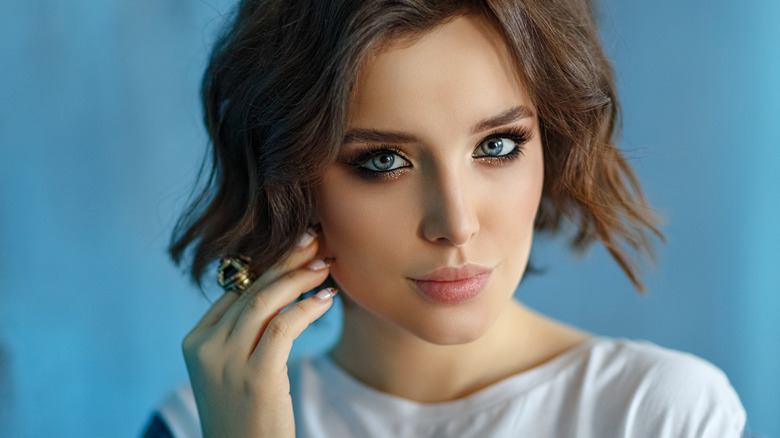




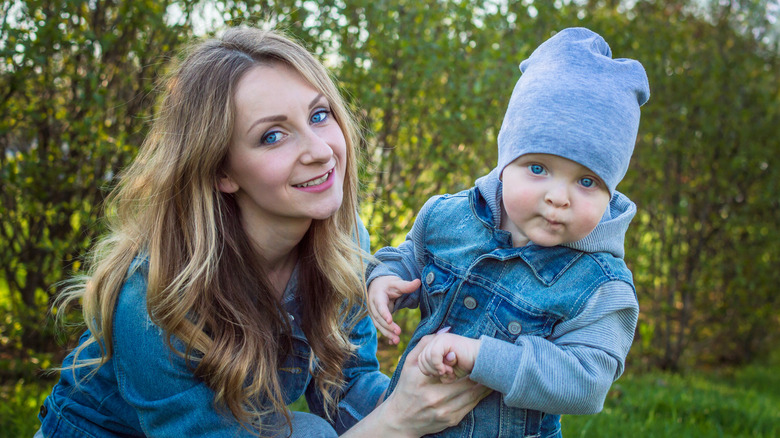


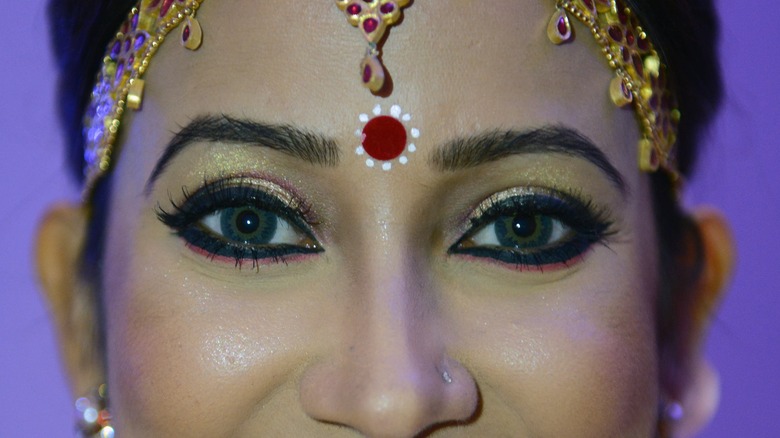

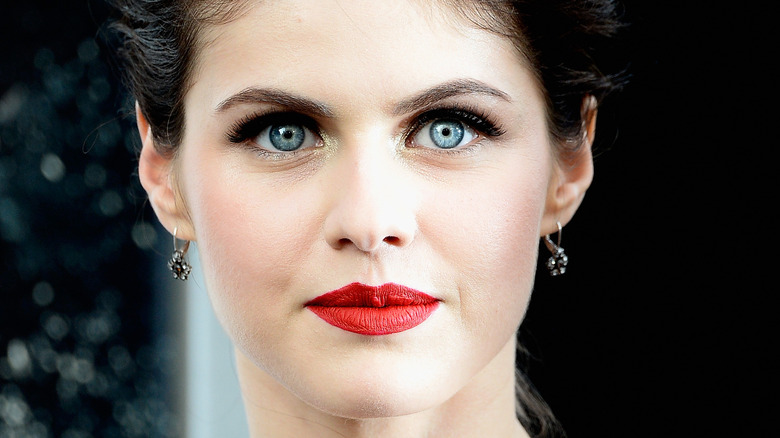
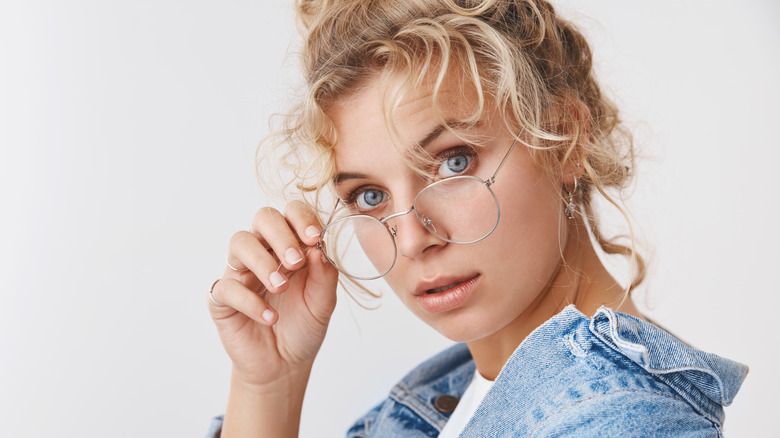



0 Response to "How Many Differnt Types of Blue Eyes Are Thire"
Post a Comment